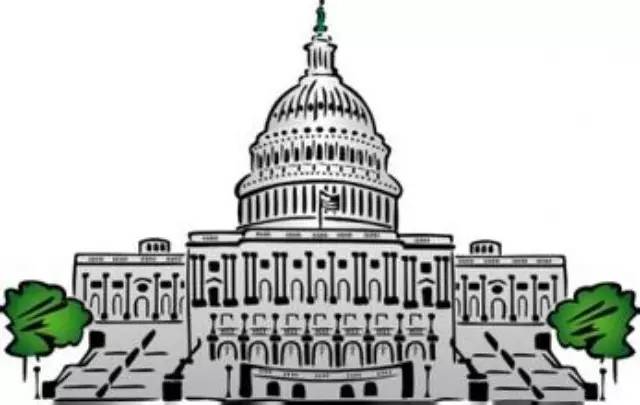【美国移民】EB-5移民立法-从3年前的再授权进程,看今年国会山博弈
6月3日,参议院的Grassley和Leahy提案 - S1501,引发了业内的大讨论,不过至今这么有影响力的提案,还是在Introduce(提出提案)的状态,还没走完参议院的流程,在8月份开始国会休假5周之后,国会是否有时间,能够在9月30日之前,通过达成一致的EB-5授权延期法案,业内现在相对普遍的预期是:难。
今天来看下一篇GT律所Matthew Virkstis律师的文章,看看3年前EB-5区域中心法案是如果被再授权的,由业内朋友Adela义务翻译,特此感谢。

EB-5区域中心项目的再授权给予国会一个绝佳机会
2012年9月28日,奥巴马总统在EB-5投资移民区域中心计划法案到期前2天,签署了S.3245法案将其又延续了三年。该法案主要由Patrik Leahy议员发起,Grassley, Kohl, Hatch, Rubio, Schumer, Lee, Conrad, and Collins议员协助发起。法案的题目可不短,“授权延续3年:EB-5区域中心项目、E-Verify项目(员工电子查询系统)、特别宗教类移民和J1签证豁免项目。”
EB5Sir注:今年的新提案 - S1501,也是Leahy和Grassley议员在操纵的,只不过这两位位置换了,Leahy退任,Grassley就任新参议院司法委员会主席。
S.3245法案在参议院的一致通过,以及在众议院中以412票赞成对3票反对的压倒性优势,并不能反映出一路的挑战和妥协。例如,当参议院在2012年5月24日首次引入该提案时,提案提供了四个即将到期的项目的永久化授权申请。提案中的第五部分,有一条“本法案,不可解释为是对本国身份的计划、测试、试点或发展的授权”,便是一个参议员所附加的,其依赖所有参议员,使得大家不得不阻止一致同意的协议。
在S.3245法案颁布后的时间里,EB-5区域中心计划经历了极大的增长。据EB-5投资联盟(EB5Sir注:此为EB-5行业的联盟行业组织,意在政策游说)及U.S. Policy Metrics/Hamilton Place Strategies最新出具的报告显示, EB-5计划在2005年至2013年期间至少产生了52亿美元的私人投资,仅2013年就产生了16亿美元(摘自Laura Reiff)。
仅就2008年的金融危机而言,EB-5项目开始发挥其全部潜能来推动经济增长。美国国务院统计的年度签证发放数据也证明了EB-5的走势。EB-5逐渐变成开发商及其他企业可信的、主流的融资方式,这种上升趋势还将继续。根据EB-5计划从2012年到2015年间的增长来看,参议员和众议员对S.3254法案的投票赞成也是基于对就业创造及资本投资的承诺。
自从2012年始,EB-5区域中心计划的经济记录给人带来无比深刻的印象。但最近立法者们、政府问责办公室、国土安全部检察长在EB-5快速增长和成功的同时,对项目监察度的增加也使得重新授权的过程更为复杂。这一点再结合多种提升该计划竞争策略的计划,这些建议和所有利益者相关者的期望一样。如果不这样做的话,在下一个授权的崎岖之路上会发生更多不可预测性。
然而,甚至在一个复杂的立法背景下,即将处于日落期的EB-5区域中心项目(EB5Sir注:这里指,EB-5区域中心在今年9月30日到期的所谓日落条款),给立法者们显示出了共同努力、增强经济、减少失业率及那些振奋想通过投资来美国的人们的信心而提供了真正的机会。对那些想通过直接和快速的方式作出利于国家利益的民选官员来说,这个机会是一种非常好的减少财政赤字的中立方法。
当参议员和众议员在8月休会期,回他们所在的州时,EB-5利益相关者们应该抓住此机会来分享他们和他们选举的官员共同作出的杰出工作。
2015年9月30日,将是濒临国会立法的最后时间。这段时间正好是国会迅速采取行动来维持EB-5区域中心计划,作为经济增长的重要引擎的好时机,并且还要避免因失误而造成功亏一篑的局面。如果我们要在国会过去的几年中发现点什么,那就是参议员和众议院可以携手共同制定法律,在需要的时间和地点。
原文作者:GT律所Matthew Virkstis律师,文章来源:www.eb5insights.com。
EB-5 Regional Center Program Reauthorization Gives Congress a Golden Opportunity
By Matthew Virkstis on July 17th, 2015 Posted in EB-5 Program, Regional Center
On Sept. 28, 2012, just two days shy of its expiration, the EB-5 Regional Center Program was extended for three years when President Obama signed S.3245 into law. The bill was sponsored by Senator Patrick Leahy, and cosponsored by Senators Grassley, Kohl, Hatch, Rubio, Schumer, Lee, Conrad, and Collins. It had no short title, listed as a bill “[t]o extend by 3 years the authorization of the EB-5 Regional Center Program, the E-Verify Program, the Special Immigrant Nonminister Religious Worker Program, and the Conrad State 30 J-1 Visa Waiver Program.”
Senate bill 3245’s unanimous approval in the Senate and overwhelming passage in the House on a vote of 412-3 did not reflect the challenges and compromises that were made along the way. For example, when the bill was first introduced in the Senate on May 24, 2012, it provided permanent reauthorization for the four expiring programs. Section 5 of the bill, which provides that “nothing in this Act may be construed to authorize the planning, testing, piloting, or development of a national identification card,” was an addition by a senator, who leveraged the ability all senators have to single-handedly block a unanimous consent agreement.
In the years following the enactment of S.3245, the EB-5 Regional Center Program has experienced tremendous growth. According to a recent report commissioned by the EB-5 Investment Coalition, and authored by U.S. Policy Metrics/Hamilton Place Strategies, which Laura Reiff wrote about here, the EB-5 Program generated $5.2 billion in private investment between 2005 and 2013, with $1.6 billion invested in 2013 alone. It is only since 2008 during the height of the financial crisis that the program began approaching its full potential as a driver of economic growth. The U.S. Department of State’s collection of annual visa issuance data is illustrative of the program’s trends. By all accounts the upward trajectory will continue as EB-5 has increasingly become a credible and mainstream source of capital for developers and other entrepreneurs. In light of the EB-5 Program’s growth between 2012 and 2015, the senators and representatives who voted in favor of S.3254 over-delivered on the promise of jobs and capital investment.
The EB-5 Regional Center Program’s economic track record since 2012 is impressive. But recent increased scrutiny on the program from lawmakers, the Government Accountability Office, and the Department of Homeland Security Inspector General—in part symptoms of its own rapid growth and success—have made the reauthorization process more complex. This, combined with a variety of competing policy ideas about improving the program, counsels all stakeholders to expect an equally, if not more unpredictable and bumpy road to the next reauthorization.
Even against a complicated legislative backdrop, however, the impending sunset of the EB-5 Regional Center Program presents lawmakers with a real opportunity to work together to strengthen the economy, reduce unemployment, and bolster the confidence of those who wish to invest in the United States. And this opportunity is an entirely deficit-neutral way for elected officials to benefit the national interest in a very direct and immediate way. As senators and representatives return to their states for the August recess, EB-5 stakeholders should take the opportunity to share the good work they have been doing with their elected officials.
September 30, 2015 is edging closer as the legislative days in Congress are waning. But there is time for Congress to act swiftly to sustain the EB-5 Regional Center Program as a vital engine for economic growth and avoid the disruption a lapse would cause. If we have observed anything over the past few years in Congress, it is that senators and representatives are capable of coming together and making law where and when it counts.
